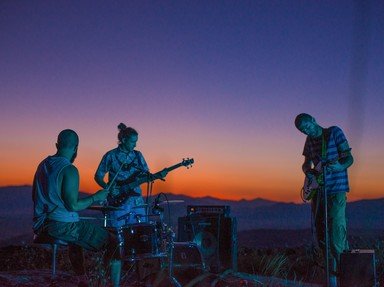Quiz Answer Key and Fun Facts
1. "The Andy Griffith Show" (1960-68) opens with a memorable tune whistled while sheriff Andy Taylor strolls along with his son Opie (played by Ronnie Howard) as they get ready to go fishing. What is its name?
2. What short piece of classical music, published decades before the invention of television, served as the theme music for Alfred Hitchcock's TV program in the 1950s?
3. Not many people know that the theme music to "Perry Mason" (1957-66) actually has a name. What is it? (By the way, it's not "The Theme from Perry Mason"!)
4. A long-running U.S. Saturday morning cartoon show used to open with a duck and a rabbit performing a song-and-dance number:
"Overture, curtain, lights!
This is it, the night of nights!
No more rehearsing and nursing a part!
We know every part by heart!"
What was the ORIGINAL name of this program?
5. After the 1976 Olympics, the theme to the soap opera "The Young and the Restless" became associated with superstar, perfect-10 gymnast Nadia Comaneci because she used the piece several times during her gold-medal Olympic routines at Montreal.
6. Which long-running murder mystery series had a piano playing a classical-sounding tune during the first few bars of the opening credits (followed by a full orchestra)?
7. In the UK television series "Midsomer Murders", what early electronic musical instrument provides the eerie melody in the opening and closing themes?
8. In the hilarious "Mr. Bean" television series (1990-1995) originating from the UK, in what foreign language does the choir sing during the opening and closing credits?
9. What is unique about the main title to "Mission: Impossible" (1966-1973)?
(Hint: Even if you've never studied music, you can answer this if you can hear the ORIGINAL theme in your head.)
10. Many TV shows had rather distinctive instrumental themes that in fact had lyrics written for them ORIGINALLY, even though they were not heard during the opening or closing credits. One of these TV shows, however, had lyrics written LATER, without permission of the composer -- lyrics which were NEVER performed on the program. Which one?
Source: Author
gracious1
This quiz was reviewed by FunTrivia editor
kyleisalive before going online.
Any errors found in FunTrivia content are routinely corrected through our feedback system.

